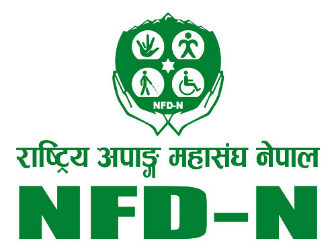Concept & Principles of Universal Design for Learning
Shrikanta Sapkota
 Abstract
Abstract
This article has been written with the objective of providing information on the concept and principles of universal design of learning. This article presents the standard definition and established principles of UDL. Universal design for learning refers to the design of products and environments to be usable by all people, to the greatest extent possible, without the need for adaptation or specialized design in the field of education. UDL stresses flexible and customizable delivery of content, assignments and activities. This article minutely analyzes the seven principles along with the concept of UDL. Finally, the article concludes with the finding of combination of UDL curriculum accommodation and modification, differentiated instructions with seven principles of UDL can make our learning accessible for all.
Introduction
The design of products and environments to be usable by all people, to the greatest extent possible, without the need for adaptation or specialized design (CUD).”Universal design means the design of products, environments, programmes and services to be usable by all people, to the greatest extent possible, with the need for adaptation or specialization design. Universal design shall not exclude assistive devices for particular groups of persons with disabilities where this is needed” (CRPD-2006). In the same way Crow and Crow defines “learning is the acquisition of habits, knowledge & attitude”. When we connect learning in the context of universal design it automatically clarifies what is UDL.
Concept of UDL
Concept of UDL
It has its roots in the field of architecture and cognitive neuroscience. It recognizes the promise of technology to meet the needs of individual learners because of the inherent and nearly limitless flexibility of technology itself. National legislation requires attention to Universal Design (UD) in curriculum and assessment development. UDL principles guide educators in finding innovative ways to make curriculum accessible and appropriate for individuals with different backgrounds, learning styles, abilities, and disabilities in various learning situations and contexts (Rose & Meyer, 2002).
It is obvious that we cannot challenge the nature and change the natural structure of mountain, river etc. but we can make the human made structures accessible for all and friendly. Universal design for learning is a new concept that promotes accessible, barrier free and right based education. It emphasizes meeting the individual needs of a broad range of students. UDL stresses flexible and customizable delivery of content, assignments and activities. Which goes beyond accommodating students with disabilities to benefit all students.
“Nothing can be truly universal; there will always be people who cannot use an item no matter how thoughtfully it is designed. However, we can almost always improve on the things we design to make them more universally usable” (as cited in McGuire, Scott, & Shaw, p. 172). People do not receive process and remember in the same way. We need UDL to address a variety of cultural, ethnic and racial backgrounds, distinct learning styles, different primary languages and different abilities of learners.
According to World Blind Union over 90% of all published materials cannot be read by blind or low vision people. They asked for the right to read the same newspapers, magazines and books that sighted people have access to. We need to have the rights in all countries to reproduce these materials into accessible formats, such as Braille, large print, and audio editions (WBU).
UDL is new concept in the Nepalese context but essential to be adopted in order to remove barrier in education and achieve goal of education for all. To avoid the hindrances of physical, communication and mobility disability our government has to implement this concept in the education system to implement new constitution of Nepal we should adopt universal design from physical structure to mental attitude. Our curriculum reading materials, teaching learning activity, assignment, assessment to combat against barrier, discriminatory attitudes and creating welcoming school educational system. It is the most effective means of providing justice through reasonable accommodation/ positive discrimination in education. The teachers from lower primary level to Higher University level should be aware in preparing accessible materials, adopting inclusive methods to address diversities of the students.
It is not difficult to make our learning universal. Information communication technology and assistive devices have made easier to make learning based on universal design. There is no single way of removing barrier and creating access of all individual in education system but combination of curriculum accommodation, curriculum modification, differentiated instruction and seven principle of UDL may be the effective way. There are seven principles of universal design to guide the design of environments, product and communications. These principles are helpful to consider the three brain networks of learning: Recognition network (what), Strategic Network (how) and Affective Network (why) while teaching.
Principles
Seven Principles presented by Center for Universal Design are discussed below.
Principle 1: Equitable Use
Principle 2 : Flexibility in Use
Principle 3: Simple and Intuitive Use
Principle 4: Perceptible Information
Principle 5: Tolerance for Error
Principle 6: Low Physical Effort
Principle 7: Size and Space for Approach and Use
Principle 1: Equitable Use
– The design is useful and marketable to people with diverse abilities.
– Provide the same means of use for all users: identical whenever possible; equivalent when not.
– Avoid segregating or stigmatizing any users.
– Provisions for privacy, security, and safety should be equally available to all users.
– Make the design appealing to all users.
Principle 2: Flexibility in Use
– Provide choice in methods of use.
– Accommodate right- or left-handed access and use.
– Facilitate the user’s accuracy and precision.
– Provide adaptability to the user’s pace.
Principle 3: Simple and Intuitive Use
– Eliminate unnecessary complexity.
– Be consistent with user expectations and intuition.
– Accommodate a wide range of literacy and language skills.
– Arrange information consistent with its importance.
– Provide effective prompting and feedback during and after task completion.
Principle 4: Perceptible Information
– Use different modes (pictorial, verbal, tactile) for redundant presentation of essential information.
– Provide adequate contrast between essential information and its surroundings.
– Maximize “legibility” of essential information.
– Differentiate elements in ways that can be described (i.e., make it easy to give instructions or directions).
– Provide compatibility with a variety of techniques or devices used by people with sensory limitations.
Principle 5: Tolerance for Error
– Arrange elements to minimize hazards and errors: most used elements, most accessible; hazardous elements eliminated, isolated, or shielded.
– Provide warnings of hazards and errors.
– Provide fail safe features.
– Discourage unconscious action in tasks that require vigilance.
Principle 6: Low Physical Effort
– Allow user to maintain a neutral body position.
– Use reasonable operating forces.
– Minimize repetitive actions.
– Minimize sustained physical effort.
Principle 7: Size and Space for Approach and Use
– Provide a clear line of sight to important elements for any seated or standing user.
– Make reach to all components comfortable for any seated or standing user.
– Accommodate variations in hand and grip size.
– Provide adequate space for the use of assistive devices or personal assistance.
These above mention principles were developed in 1997 by a working group of architects, product designers, engineers and environmental design researchers, led by the late Roland Mace in the North Carolina State University.
Dear teachers and planners of education system and practitioner of education system, evaluate the education system on the basis of seven principles and tried to make teaching learning accessible for all applying these principles and removing the barriers. Teachers are the guide the world without any assistance.
Conclusion
Some students learn through visual materials some using auditory and tactile and some learn by kinesthetic activities. So please don’t forget to make your materials (product) delivery (process) and environment (class room) universally useable maximizing accessibility and reducing barrier discrimination difficulty and inaccessibility. UDL stresses flexible and customizable delivery of content, assignments and activities. If we make our materials, methods and activity accessible and usable for everybody it will be useful for future use for diversified learners and context. We must be aware of this fact to be the opener of inclusive education and teacher of universal learners.
References
The writer is now lecturer in Education Department of Prithbi Narayan Campus (PNC), Pokhara. He can be contacted at shrikantasapkota@gmail.com


